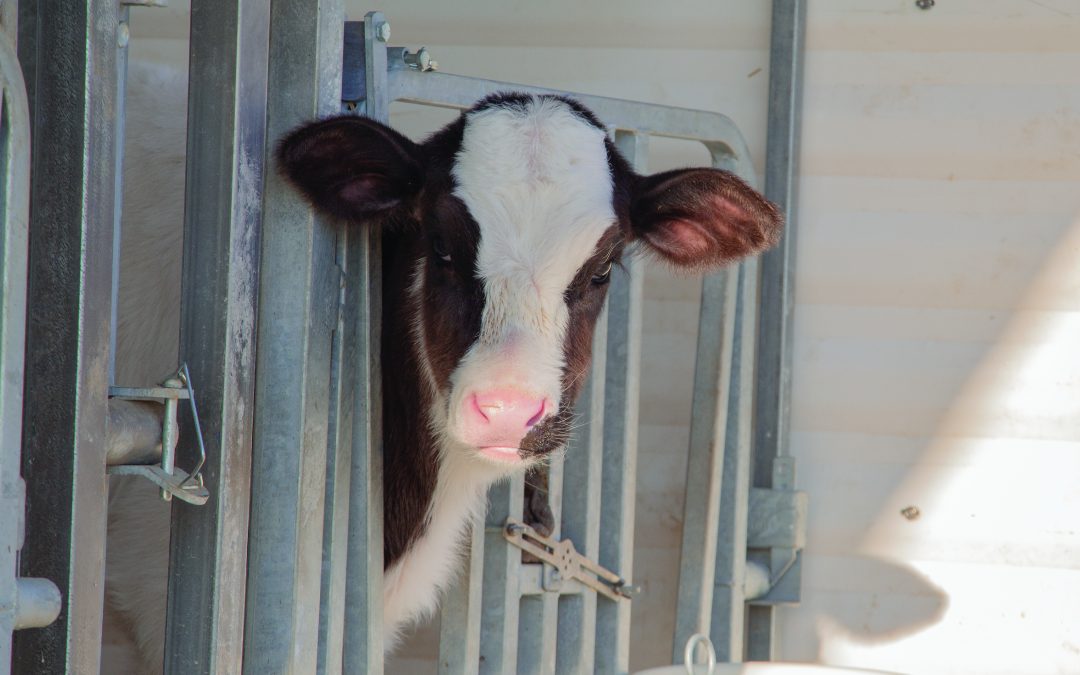M.Sc., Ruminant Nutritionist
Grand Valley Fortifiers
Every year in late fall and through the winter months we inevitably hear from a handful of producers concerned with low colostrum yields on their most recent cows that have calved. Reasons for low colostrum yields in cows has been poorly studied and on most farms the problem tends to resolve itself with some small tweaks to the dry cow ration. Recently, a study done by researchers at Cornell University in New York, attempted to summarize the environmental and nutritional factors that influence the quality and quantity of colostrum. We will summarize the key takeaways from that study below. Monthly colostrum yields for the study are summarized in Figure 1. The median (range) colostrum yield was 4.1 (0.1-38.6) kg for primiparous and 5.0 kg (0.1-43.8) kg for multiparous cows. Average colostrum quality (Brix %) was 24.6 and 25.7 for primiparous and multiparous cows, respectively.

Fig 1. Monthly colostrum yield (kg) from 5,790 primiparous and 12,553 multiparous Holstein cows from 18 NY farms
When looking at the results of the study on an individual animal basis here are the factors that affect colostrum yield. Brix %: Higher Brix % leads to a lower colostrum yield, suggesting a dilution effect as volume increases the amount of total IgGs stays the same, thus leading to a lower Brix % reading.
Calf Sex: Cows having females had lower colostrum volume than those with male calves, while cows having twins had the highest volume of colostrum.
Dry Period Length: Cows with shorter dry periods (<47 days (d)) had lowest amounts of colostrum, cows with more normal dry periods (47-67 d) were in the middle, while cows with longer dry periods (>67 d) had the highest yield.
Previous Lactation Milk Yield: Cows with more than 13,090 kg (305 ME) in the previous lactation had more colostrum at calving compared to those cows that were below this amount of milk.
Gestation Length: The shorter the gestation length the lower the colostrum yield, with cows carrying calf (283-293 d) giving more colostrum than cows with 274-282 d gestation length. Both groups yielded more than cows with a gestation length of less than 273 d.
Stillbirth: Cows with a calf born alive give more colostrum than cows with a stillborn calf.
Previous Lactation Length: Longer lactation length is associated with higher colostrum yields. Cows with a lactation longer than 344 d had higher amounts of colostrum than cows with a shorter lactation.
Parity: Cows in parity #2 had the highest volume of colostrum when compared to cows in 3+ parity. Of note, the volume of colostrum did link with Brix % (as mentioned above) with the lower colostrum levels having the higher Brix % across parities.

Heat & Humidity Index (THI 7 d before calving): Cows that calved in periods of more cold weather (THI <40.2 & THI 40.3-50.1) had lower levels of colostrum than cows that calved in more moderate temperatures (THI 50.2-60.0 & THI 60.1-69.2). Cows that calved with a THI higher than 69.2 gave the most colostrum. This would confirm the bias that we see lower levels of colostrum in our colder months.
Light Intensity: Cows with greater light intensity in the last 14 days of the dry period had higher volumes of colostrum compared to those animals with lower levels. There are pen level factors that also affect the amount of colostrum yield. They are summarized below:
Starch (% of DM): Diets with dietary starch levels in their close-up pens greater than 18.5% lead to cows giving more colostrum than diets lower in starch.
peNDF (% of DM): Diets with more physically effective NDF (peNDF) >27.1% lead to cows giving more colostrum than those diets with lower levels of peNDF (<27.0%).
Crude Protein (% of DM): Diets that were below 13.5% or greater than 15.5% had lower levels of colostrum when compared to diets that were between 13.5-15.5%.
DCAD (mEq/100g): Negative DCAD diets are commonly fed to mitigate the risk of milk fever in our fresh cows. The goal for most negative DCAD diets is to achieve a dietary DCAD of -10. In this study, diets that were higher in DCAD (> -8.0) had the most colostrum compared to diets that had achieved a more negative balance (-8.0 – ≤-16.0).
BHB ≥1.2 mmol/L (%): the study looked at the percentage of fresh cows that had a BHB measure of ≥1.2 mmol at 3-14 days after calving. Herds with > 10% of cows with a BHB reading ≥1.2 mmol had higher colostrum yields than those herds with < 10% of cows measuring higher BHB levels. As you can see, there are many factors that can influence the volume of colostrum in a given cow at a given time of year. Both colostrum yield and Brix % are associated with cow, farm management, nutritional and prepartum environmental factors. It is important to remember the volumes that are to be expected from your cows, as this study showed a median 4.0-5.0 kg on more than 18,000 cows. If you are experiencing a period of lower colostrum yields, assessing these nutritional and management factors on your farm, and making any necessary adjustments should help alleviate the issue. For assistance with this, reach out to a GVF Dairy Specialist and ask them for help setting up a plan to tackle this challenge.
This article was written for the Winter 2023 Central & Atlantic Dairy Grist. To read the whole Dairy Grist, click the button below.

